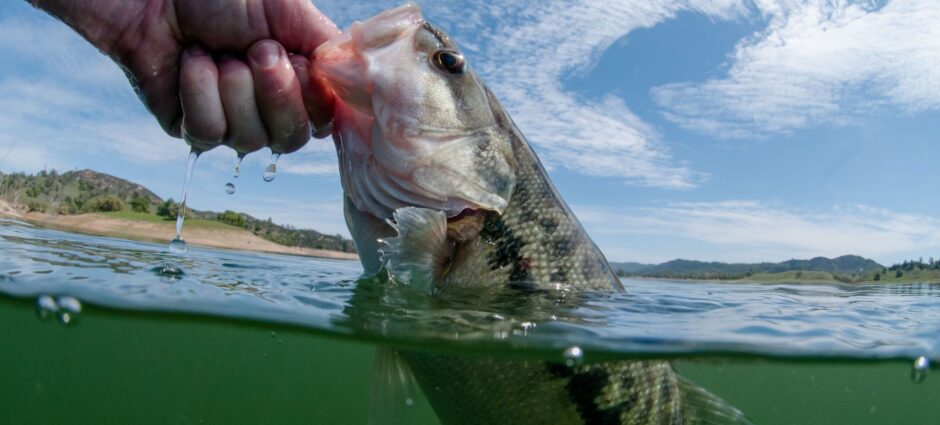Underwater Humps
Smallmouth bass can be found roaming around these underwater humps offshore. At times, they may be on top of the hump, other times on the edge and other times out in deeper water close to the underwater humps. To fish these spots better, it helps to have a good fish finder. You can pull up to these spots and see if there are any fish on them and where the fish are located. On some of these spots, if you are off by 20 to feet or so, it can be the difference in catching a limit or catching zero.
The best underwater humps will have rock on them, but don’t rule out weeds either because on some lakes, smallmouth bass relate to the weeds quite a bit too.
Reefs
Fishing for smallmouth bass on reefs can be very productive. Depending on the lake you are fishing, you may or may not have the option of fishing a reef. The Great Lakes and other large lakes up north are known for having reefs. In spring, you may find some smallmouth bass around the reefs, but the summer and fall months is when you will usually find the large schools of smallmouth bass around the reefs.
During the summer and fall, smallmouth bass can often be found on top of the reefs, along the drop-offs running off the reefs and at times, suspended in open water very close to the reefs. When you can find reefs with lots of rock and some deep water nearby, you will most likely find some smallmouth bass. Some of these reefs will have 20 to 30 feet of water with water as shallow as 4 feet just a cast away. The reefs that offer a good mixture of shallow water and steep drop-offs tend to hold the most smallmouth bass. The shallow water will usually hold some bass in the early morning, evening and at night. The deeper water is where you will usually catch better numbers of smallmouth bass, especially if you are looking for bigger bass. It is not uncommon to catch smallmouth bass anywhere from 20 to 40 feet deep in clear water lakes.
Islands
The islands are the easiest offshore structure to fish because you can find them with your eyes. You don’t need any additional technology to find these spots. The downside of that is that all the other anglers can find them easily too, so they will usually get pressured more than an underwater hump offshore. Islands are great for smallmouth bass, especially if there is some deep water around them and some rocks.


